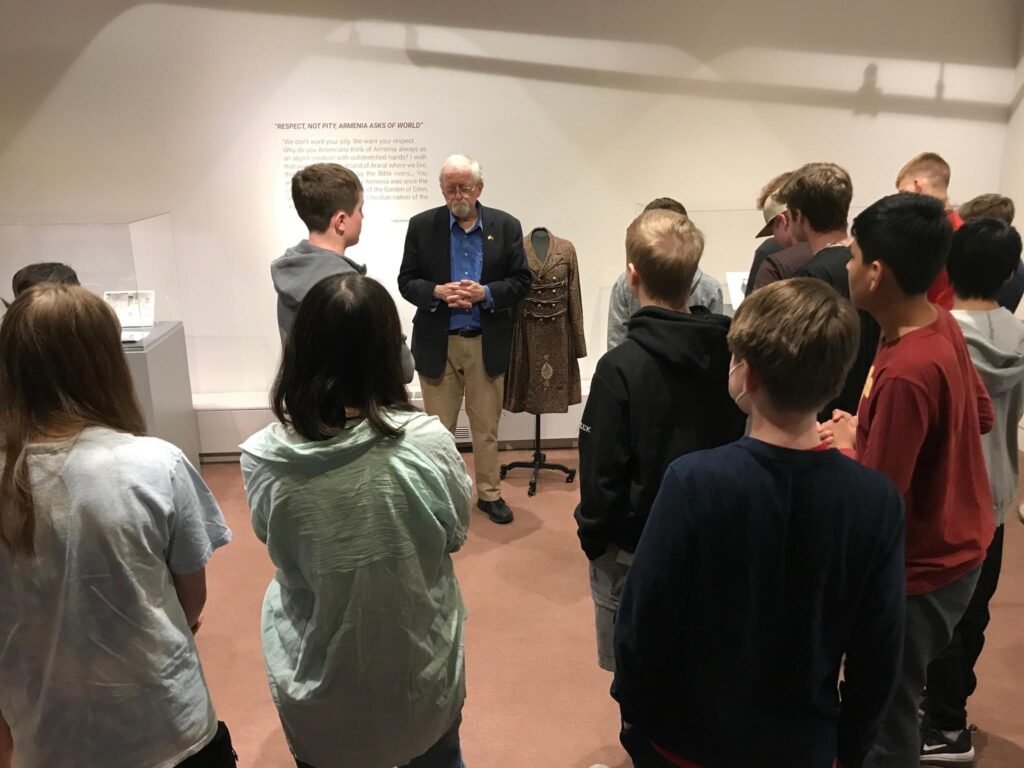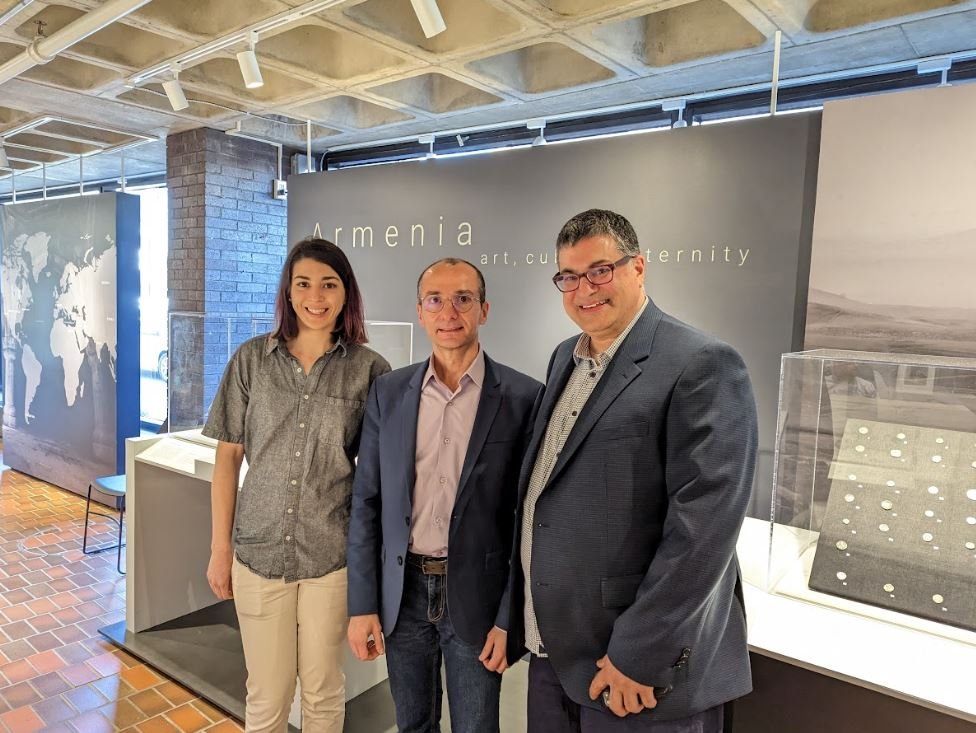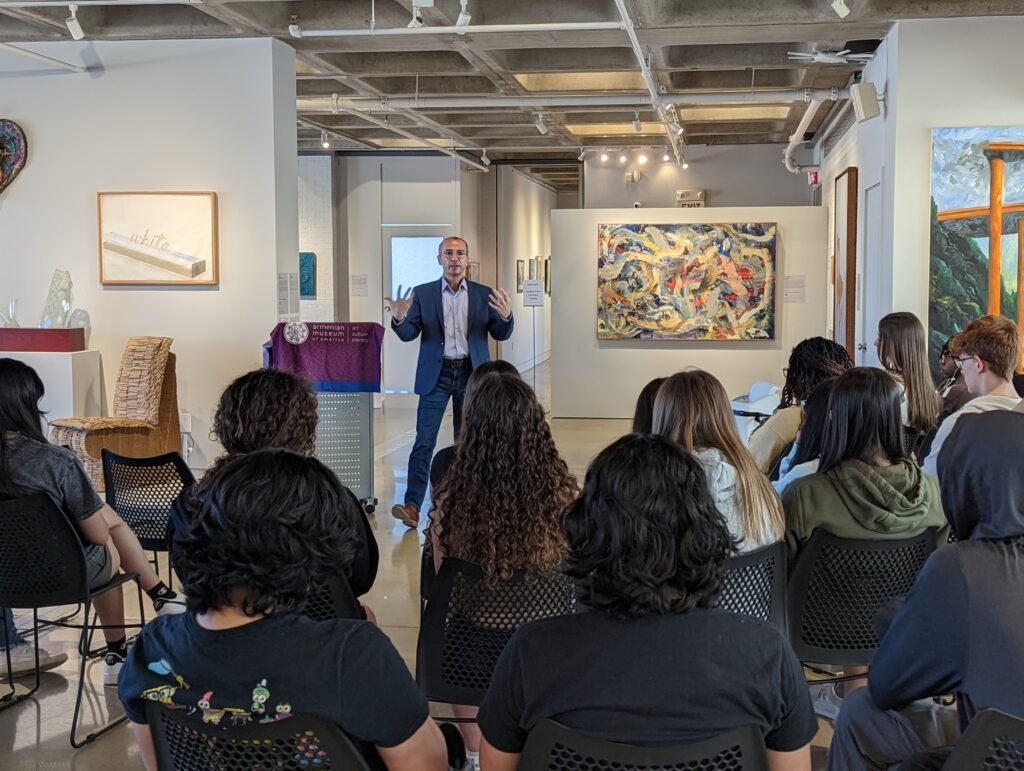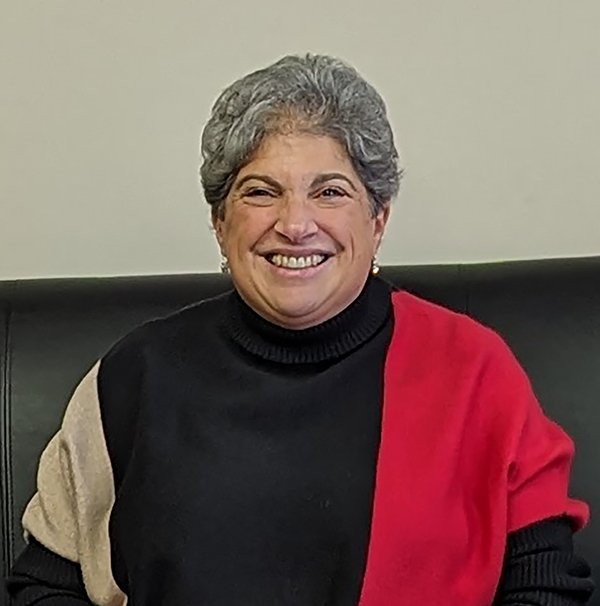WATERTOWN, Mass.—Last Thursday, April 13, was a big day at the Armenian Museum of America as 110 ninth-graders from Waltham High School visited its galleries during the day, followed by more than 50 students from Montreal’s Sourp Hagop Armenian School (L’École Arménienne Sourp Hagop) later that evening. These school visits, which have increased since the end of the pandemic, are part of the museum’s genocide education programming, which is sponsored by a generous grant from the Cummings Foundation. Since 2022, more than 30 groups from elementary and high schools, as well as universities, have visited the museum.

The Weekly joined Waltham High School students studying modern world history, as they made their way through the museum’s galleries, expertly guided by director of building operations Berj Chekijian and collections curator Gary Lind-Sinanian. Overseeing the school visit was executive director Jason Sohigian, who worked closely with history teacher Rachel Unger to create a meaningful experience for the students. “This was an incredible experience for the students, to learn more about the Genocide as it ties to their curriculum but also about Armenian and history and culture in the centuries before the Genocide,” Sohigian told the Weekly. “We appreciate the effort made by Rachel [Unger] and Derek [Vandegrift] to coordinate such a large visit with us.”

Unger was eager for her students to “get out of the classroom and have an immersive experience,” believing it leads to a greater learning experience and better information retention. “Seeing artifacts first-hand and hearing from experts in the field helped students gain a deeper understanding of Armenian history and the Armenian Genocide,” Unger told the Weekly. Her students toured the first two floors of the museum, which highlight Armenian culture before and after the Genocide, as well as the Armenian Genocide exhibit.
The students also participated in presentations and discussions with Dr. Khatchig Mouradian, the Armenian and Georgian Area Specialist at the Library of Congress and a lecturer in Middle Eastern, South Asian, and African Studies at Columbia University. Dr. Mouradian’s presentations were offered in the Adele and Haig Der Manuelian Galleries, where students viewed “On the Edge: Los Angeles Art 1970s-1990s” during its final days on display at the museum.
“Dr. Mouradian emphasized that we always need to look at the stories that come before and after a tragedy, and we should never start or end the story with death or catastrophe,” Unger explained. She commended the museum’s “an impressive exhibit of ancient and medieval artifacts,” which illustrate the many layers of Armenian history. Ahead of their entrance into the Genocide exhibit, she wanted her students “to see that no people starts as a victim.”
Dr. Mouradian focused on several key points in his presentations. “The story before the Genocide is important, and the story after the Genocide is important,” he said, noting that the museum is the ideal location in which to explore both. He explained that learning about genocides allows for more empathy and that it is important to think of the story not only from the perpetrators’ perspective but also from the perspective of the victims. “Genocide is the extreme form of silencing the victims,” Dr. Mouradian explained. “And sometimes, denial comes through silence,” he said, underscoring the importance of genocide education.

Waltham High School’s director of history and social studies Derek Vandegrift also attended the outing and told the Weekly that he was “struck by how intensely personal nearly all of the items on display were.” “Perhaps more powerful than the pieces themselves were the stories that accompanied them,” he explained. “The story of how one family went to such great lengths to ensure that its book of the gospels would survive for future generations brought to life both the struggles and the determination of the Armenian people,” said Vandegrift. “The impact of this personal approach to storytelling clearly connected with our students.”
Throughout the visit, Vandegrift noticed that small groups of students would quietly sit and reflect in front of different exhibits, namely the enclosed display of a child’s clothing from Der Zor. Ultimately, Vandegrift said that the students “left with a message that we are all connected to and responsible to one another in our shared humanity.”
Unger shared some of the students’ impressions and comments after the field trip with the Weekly, which indicate the impact of a visit to the Armenian Museum of America on students – and their teachers.
“I thought it was interesting and provided a window into Armenian culture and the past that I never really knew about. I think that focusing on the different parts of culture and the origin of the Armenians was something that I liked, and it made me think more about the Armenians rather than just thinking about the Genocide that we have learned about.” – Miyana Bahl
“My experience at the Armenian Museum is one I will never forget. Going to the museum made me feel very educated on not just the horrible Genocide, but also the Armenian culture. I absolutely loved seeing the jewelry and handmade clothing. The speech given was also very informative, and I was able to ask the questions I wanted, and I got informative answers.” – Sofia Laviano
“I learned a lot about the atrocity of the acts committed against the Armenian people. Armenian history goes back so far compared to a place like the US. I was surprised a lot by the items they had; most looked well and in good condition. One display was a desert with bones, clothes and Bible. The tour guide said that if you dug in the desert today, you would still dig up bones. I just can’t comprehend that part of a civilization can be wiped out.” – Ryan Shread
“It was very cool seeing the different artifacts from Armenia and from ancient times. I thought it was valuable because going to that museum was better than reading textbooks.” – Tharyar San
“The museum was very interesting, and it was really sad learning about all the horrors and hardships that the people of Armenia had experienced. Many stories that were provided really showed how terrible the Armenian Genocide was. It was overall a very educational trip and definitely a place people should check out if they have the chance.” – Maggie Ngo
“…our tour guide Berj Chekijian had ancestors who were killed in the Armenian Genocide. I feel like after knowing this it gave the tour more meaning because we were listening to someone who was passionate about what he was talking about and not just because he’s paid for doing it. It gave more depth to what my classmates and I were learning.” – Amyah Gomes



My name is Deborah BozBeckian Raptopoulos. My parents are Armenian Genocide Survivors. I am 73 and carry my families history and extend it to my Greek husband who is from Greece and my three grown daughters and Grandchildren. As I begin to retire as a family therapist, I would like to take part in these lectures for high school kids to those of us as seniors. I hope the Armenian museum does that for us.